-

Advertisement
https://chroniclingamerica.loc.gov/lccn/sn86081330/1914-10-29/ed-1/seq-9/#date1=1789&index=4&rows=20&words=INDEPENDENT+STAR+STAR-INDEPENDENT&searchType=basic&sequence=0&state=&date2=1963&proxtext=the+star+independent&y=0&x=0&dateFilterType=yearRange&page=1 page 9
-
'States Have Rights' article provides a clear explanation of The Oxford Democrat's political stance.
-
In the bottom left corner of this page there is a section reporting on news from outside of Oxford County.
-
The Oxford Democrat including a large section on farming and gardening tips for the readers that were written in by people all across the county.
-
Community Bulletin across the county; communication to hundreds of people without mass mailing.
-
Spring Suit advertisement in the margins. Example of catalog ordering.
-
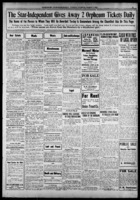
Advertisements https://chroniclingamerica.loc.gov/lccn/sn86081330/1915-03-02/ed-1/seq-11/
-

https://chroniclingamerica.loc.gov/lccn/sn86081330/1915-03-02/ed-1/seq-1/#date1=1789&index=16&rows=20&words=&searchType=basic&sequence=0&state=Pennsylvania&date2=1963&proxtext=&y=21&x=11&dateFilterType=yearRange&page=1
-
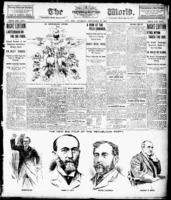
A political cartoon depicting U.S Senator Orville H. Platt riding towards the White House with politicians (Warner M. and Lauterbach) trying to get him to choose between Liberal Sunday Law (liberal law) and Strict Sunday Law (conservative law). The political cartoon represents the uncertainty that Democrats feel about Platt because the illustrator believes Platt is going through in order to please voters. Because Platt was a prominent Republican figure in the 1890s, this political cartoon represents how he would ignore his political duties to listen to the opinions of others (rich businessmen).
https://chroniclingamerica.loc.gov/lccn/sn83030193/1895-09-28/ed-1/seq-1/
Page 1
-
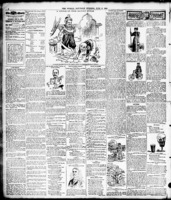
A political cartoon portraying William Lafayette Strong preparing to attack an ex-boss. The political cartoon portrays Strong as a brute who will mercilessly chop off the head of the ex-boss while the ex-boss is cowering on his knees in fear. The illustration takes an orientalist (particularly, Arabian) theme as Strong and the ex-boss are represented in Arab clothing, the architecture of the building they are in takes from Arabic designs, and the sword that Strong holds resembles that in which characters from the Arabian Nights story would carry. While the political cartoon can be described as representing Arabic culture in a degrading manner, the political symbolism within the illustration represents Strong as greedy (the reason why could be due to his association with the Republican party).
https://chroniclingamerica.loc.gov/lccn/sn83030193/1895-05-03/ed-1/seq-3/
Page 3
-
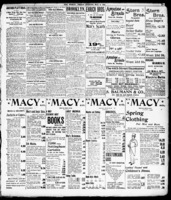
An advertisement for men’s coats, vests, and suits. In the advertisement, an illustration of a man wearing a suit and tophat is presented. The illustration of the man represents how masculinity (appearing fashionable) was portrayed in American society as the man was sketched to appear formal and dignified to persuade consumers to purchase clothing from Macy’s.
-
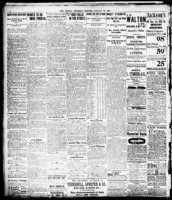
An article describing how E.H Hubbell (the Commissioner of Education for the state of New York) accused Susan Balter of selling cigarettes to Charles McGovern and John Keheler (both were twelve-year-old boys). This article demonstrates how citizens focused on moralizing youth (by preventing them from smoking cigarettes) and how the New York Board of Education dealt with affairs.
-
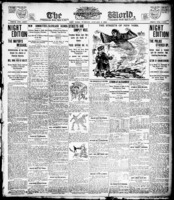
A political cartoon representing the filth of New York through exaggerated illustration. In the political cartoon, a man walks the streets of New York where the streets are filled with fog and death (represented by the Grim Reaper and the fog surrounding him). The man could be viewed as someone who is not a New Yorker and is touring the city. The political cartoon symbolizes the illustrator’s opinion that the streets of New York were dirty and needed to be cleaned.
-
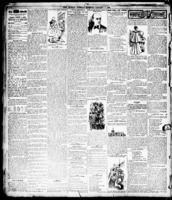
A letter (in the form of a poem) by S.T.A. to The Trinity Corporation advocating to remove the “single tax”. S.T.A. notes that the “single tax” promotes “injustice” and “discourages landlordism,”. His letter demonstrates how citizens used newspapers such as the New York World to speak their opinions about economic concerns.
https://chroniclingamerica.loc.gov/lccn/sn83030193/1895-01-01/ed-1/seq-4/
Page 4
-

An article written by James Creelman that describes the United States’ role in its policies with Japan and how it is dealing with the Sino-Japanese War. He notes that President Grover Cleveland’s peace treaty would not be accepted by the Japanese government, what would happen to China and Port Arthur after the war ended (presuming Japan won), and the loans Japan would have to pay off war debt. Creelman takes an American perspective on the Sino-Japanese War and briefly discusses the perspectives of the Japanese, British, and Russians as well. Notably, he does not describe the Chinese perspective on the war.
https://chroniclingamerica.loc.gov/lccn/sn83030193/1894-12-22/ed-1/seq-3/
Page 3
-

An article written by James Creelman that describes the United States’ role in its policies with Japan and how it is dealing with the Sino-Japanese War. He notes that President Grover Cleveland’s peace treaty would not be accepted by the Japanese government, what would happen to China and Port Arthur after the war ended (presuming Japan won), and the loans Japan would have to pay off war debt. Creelman takes an American perspective on the Sino-Japanese War and briefly discusses the perspectives of the Japanese, British, and Russians as well. Notably, he does not describe the Chinese perspective on the war.
https://chroniclingamerica.loc.gov/lccn/sn83030193/1894-12-22/ed-1/seq-3/
Page 3
-
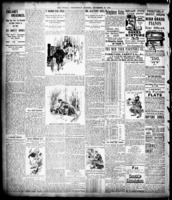
An article describing the role of Great Britain in the First Sino-Japanese War. James Creelman notes how Japan has taken a dominant position in Asia by taking over Korea and that British involvement in the war would please Japan. Creelman then describes the role of Russia as he notes from his own perspective along with the perspectives of the British and the Japanese that the Russians would not get involved in the war. This article represents how an American journalist states his own opinions relating to a foreign event.
https://chroniclingamerica.loc.gov/lccn/sn83030193/1894-11-28/ed-3/seq-6/
Page 6
-

An article describing the money that is being used to light the Statue of Liberty. The author notes the role of the New York World in supplying money to the Statue of Liberty during its creation and notes that it should play a role in keeping the Statue of Liberty active.
-

An article describing the money that is being used to light the Statue of Liberty. The author notes the role of the New York World in supplying money to the Statue of Liberty during its creation and notes that it should play a role in keeping the Statue of Liberty active.
-
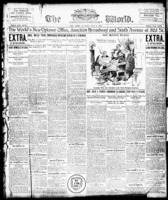
An article describing the Socialist army (labor party) led by General M.D. Fitzgerald. The article notes how many red and foreign flags are visible across the streets of New York as well as how they overshadow the American flags. This article gives it readers an insight into how the American Socialist party is advocating itself in the United States.
https://chroniclingamerica.loc.gov/lccn/sn83030193/1894-05-01/ed-4/seq-7/
Page 7
-
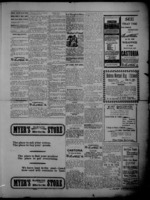
This advertisement is promoting women’s clothing items. The ad claims to have just received hats and bonnets, and more, as well as stating they are tailored to the personal taste of each customer. Another advertisement that would be targeting women in order to get them to purchase more items. By titling the garments as “Just Received”, this would also persuade women to want to go in and tailor clothing items to their personal style.
-
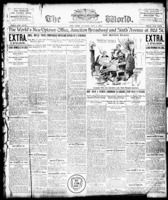
A political cartoon portraying white men being lazy and smoking in the Manhattan Flats tenement while the landlord (man in background) tries to kick them out. The lazy nature, use of newspapers, and liquor bottles on the ground shows the property that the men own while their gestures indicate that they are satisfied with their lives in tenements. Whether the political cartoon represents positive views towards tenements or that wealthy white men are taking over tenement spaces is up for interpretation.
-
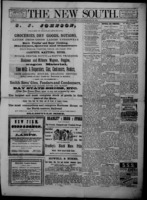
This image shows the typical layout for the front page of the New South’s front page of their issues. The title of the newspaper is in capital bolded letters at the top. On the left side of the front page, they print ads for a variety for services, stores and items that can be purchased. On the right side of the page, they start printing some of the stories that ran throughout the issue.
-
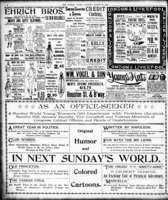
An advertisement showing suits for men and boys (with illustrations of boys wearing the suits). Many of the advertisements within The New York World were geared towards boys and men to promote their look and a strong masculine culture.
https://chroniclingamerica.loc.gov/lccn/sn83030193/1894-03-30/ed-1/seq-6/
Page 6
-

Here there is an advertisement for a sewing machine that was printed in this issue. Only women would be targeted for this advertisement because men did not do any sewing during this time period. This ad claims to have the best and cheapest sewing machine in the world. By advertising it as the cheapest and best, this would prompt women to want to buy it to test it out and try it that way they would be able to own the best machine in the world.



















